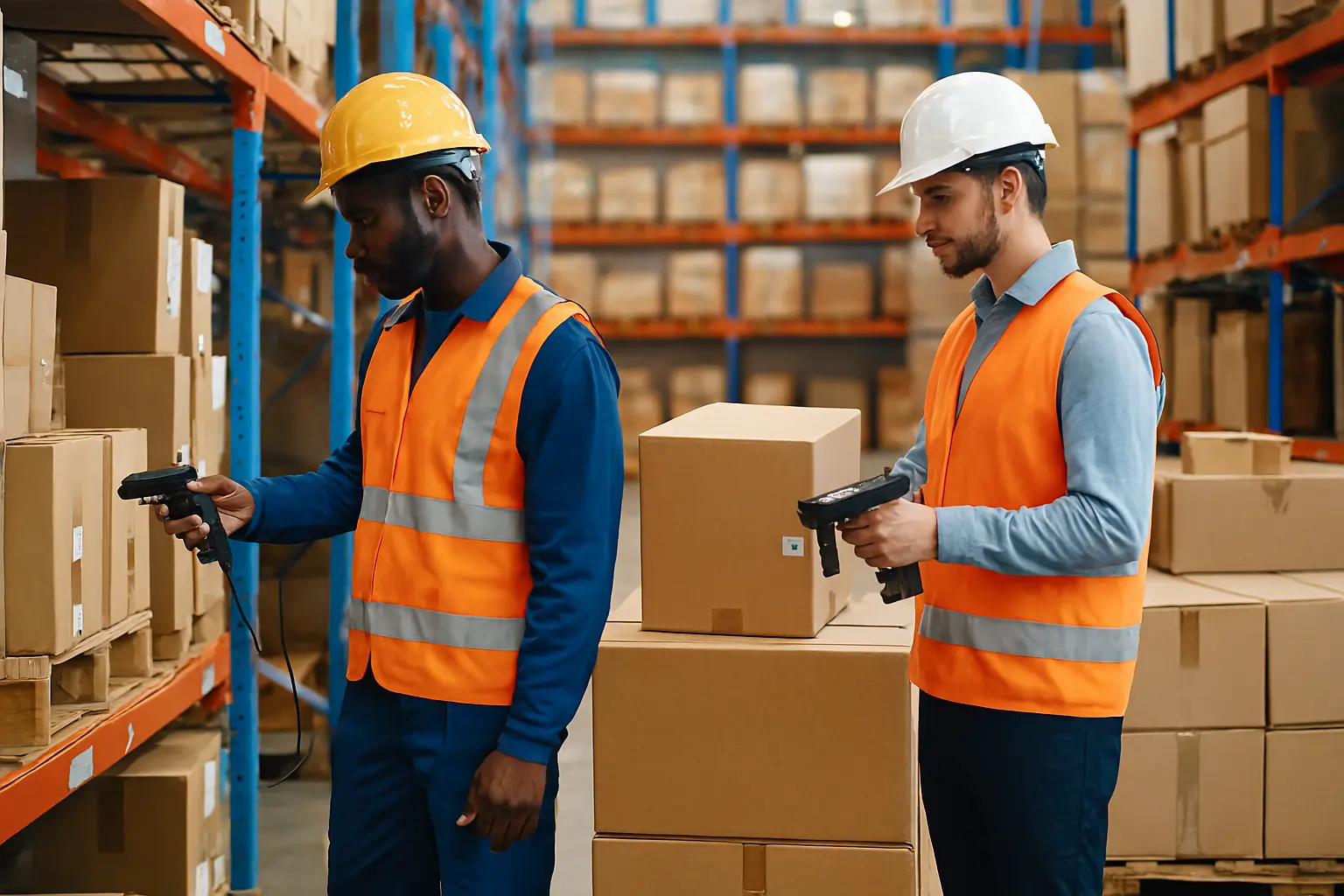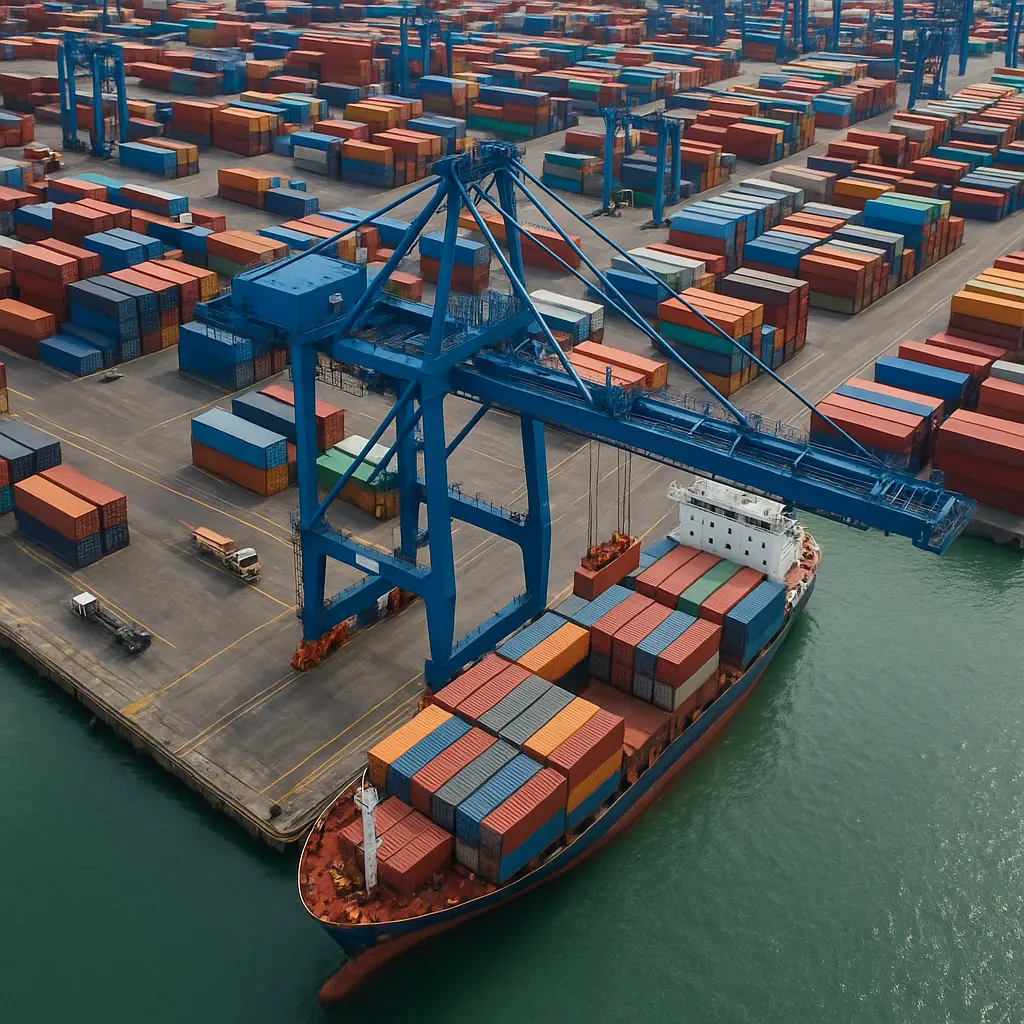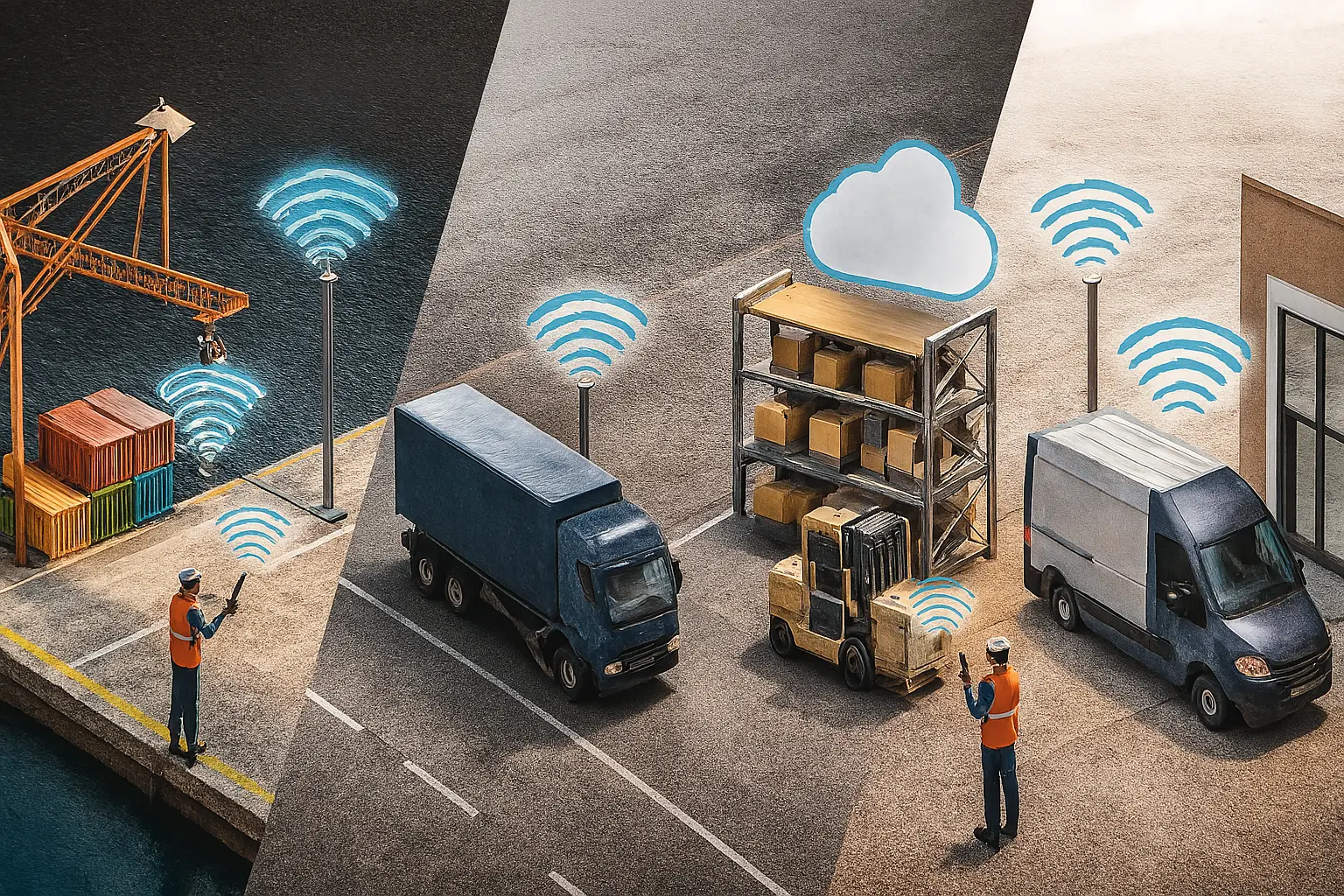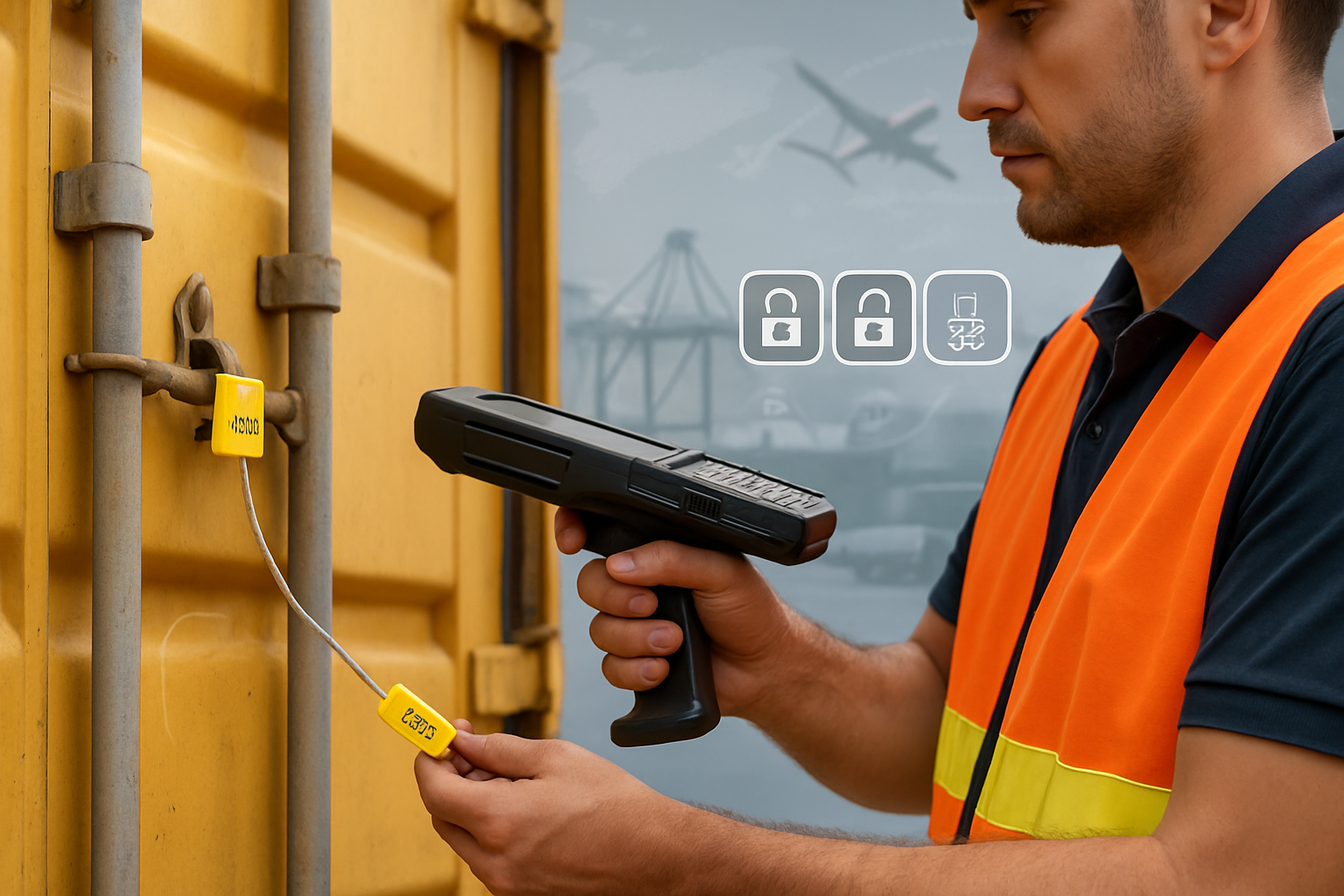For decades, barcode scanners were the backbone of inventory and logistics tracking. They helped businesses identify items quickly but required manual scanning and a clear line of sight. Today, global supply chains demand faster, more accurate, and traceable systems, and that’s where RFID readers are changing the game.
From warehouses to shipping ports, RFID technology is helping logistics and trade professionals achieve higher visibility, fewer errors, and real-time insights. In this guide, we’ll explore how RFID systems work, why they outperform barcodes, and how Klik e-Seal’s RFID solutions are helping businesses worldwide streamline their operations.
How RFID and Barcode Systems Work
Both technologies are designed to identify and track assets, but the way they operate sets them apart.
Barcode scanners use optical technology to read printed codes on labels. They require direct line-of-sight, meaning each code must be individually scanned. While this system is cost-effective, it’s time-consuming and prone to human error.
RFID readers, on the other hand, use radio waves to communicate with small chips called RFID tags. These can be read automatically, even through packaging or containers, and don’t require physical contact. UHF (Ultra High Frequency) RFID tags are especially popular for logistics because they can be read from several meters away.
Takeaway: RFID eliminates manual scanning, saving time and improving efficiency at every stage of the supply chain.
Key Differences Between RFID and Barcode Systems
Below is a quick comparison between RFID and barcode technologies:
| Feature | RFID | Barcode |
|---|---|---|
| Reading Method | Radio waves (no line-of-sight) | Optical (requires line-of-sight) |
| Read Range | Up to 12 meters (UHF RFID tags) | Within a few centimeters |
| Data Capacity | Stores detailed info like batch, expiry, and status | Limited data (numeric/alphanumeric only) |
| Speed | Multiple tags read at once | One tag at a time |
| Durability | Resistant to wear and tear | Prone to fading or damage |
| Cost Efficiency | Higher initial cost, lower long-term expense | Lower upfront cost, higher maintenance |
In simple terms, RFID systems are faster, more scalable, and ideal for real-time tracking, while barcode scanners work best for small, static operations.
Takeaway: RFID offers a clear edge in automation, accuracy, and operational efficiency.
Pros and Cons of RFID Tags
Like any technology, RFID tags come with both strengths and considerations.
Advantages:
- Read multiple tags simultaneously without manual scanning.
- Durable and reusable, especially UHF RFID tags and RFID smart labels.
- Enable real-time visibility in complex logistics systems.
- Reduce manual errors and enhance productivity.
Considerations:
- Slightly higher upfront investment.
- Requires integration with compatible readers and systems.
However, the long-term ROI far outweighs the initial setup cost, especially for enterprises managing large-scale operations.
Takeaway: RFID is a future-ready investment offering better efficiency and long-term savings.
Real-World Applications – Where RFID Outperforms Barcode
RFID is rapidly becoming the backbone of smart logistics and inventory tracking across industries:
- Warehouses: Automate stock counting with RFID tags for inventory.
- Fleet and Ports: Track container seals and cargo using inventory tracking RFID, and RFID stickers.
- Retail & FMCG: Manage shelves and reduce shrinkage through RFID inventory management.
- Pharma & Healthcare: Monitor product authenticity and temperature-sensitive shipments.
- Banking & Security: Ensure traceability of valuable assets with RFID-enabled tagging.
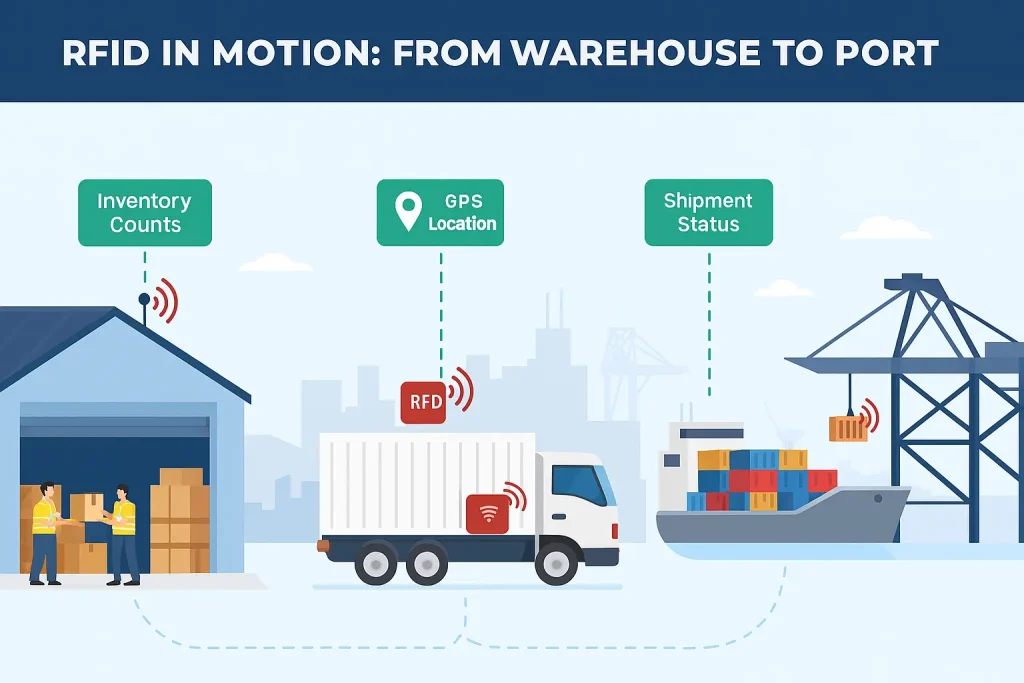
Takeaway: RFID technology ensures every product, vehicle, or shipment is tracked in real time, no manual scanning required.
Cost & ROI: The Real Difference Between RFID and Barcode
While barcodes seem cheaper upfront, the cost of RFID tags vs barcodes tells a different story over time. RFID systems reduce labor hours, scanning delays, and misreads, resulting in stronger long-term ROI.
Cost Breakdown:
- Barcodes: Low setup cost but high operational cost due to manual scanning and reprinting.
- RFID: Slightly higher setup cost but drastically lower operational cost, thanks to automation and tag reusability.
Over time, RFID systems can save thousands in labor and error correction, especially in logistics, warehousing, and cross-border trade.
Takeaway: RFID pays for itself through automation, speed, and accuracy.
Why Choose Klik e-Seal RFID Readers for Your Business?
Klik e-Seal delivers cutting-edge RFID readers and sealing solutions designed for modern global logistics. Our UHF RFID readers support long-range, high-speed tracking, making them ideal for fleet management, ports, and warehouse environments.
We offer:
- RFID smart seals integrated with tracking systems.
- Easy API integration with ERP or warehouse software.
- Real-time data for visibility, compliance, and efficiency.
Trusted by companies across UAE, India, Singapore, UK, and the USA, Klik e-Seal helps streamline trade and logistics operations globally.
Explore our RFID products or view our UHF RFID Reader
Takeaway: Klik e-Seal bridges the gap between data and delivery, empowering businesses to track smarter, faster, and safer.
Conclusion
In the battle of RFID readers vs barcode scanners, RFID emerges as the smarter, more scalable choice for global logistics and inventory systems. With better accuracy, data depth, and automation, RFID technology is setting a new benchmark for modern supply chains.
Now is the time to upgrade your operations with Klik e-Seal’s advanced RFID readers and sealing systems.
Frequently Asked Questions
The main difference lies in how they read data. Barcode scanners use optical signals and need a clear line-of-sight, while RFID readers use radio waves to detect tags automatically, even from several meters away.
Yes, the cost of RFID tags vs barcodes is slightly higher initially. However, RFID tags are reusable, durable, and save significant costs in labor and errors, offering better ROI in the long run.
Absolutely. RFID inventory management systems automate stock tracking, reduce errors, and offer real-time updates across warehouses, fleets, and distribution centers.
Some rfid tags advantages and disadvantages include higher setup cost and potential interference in metal-rich environments. However, modern UHF RFID tags are designed to overcome these challenges efficiently.
UHF RFID tags perform exceptionally well in logistics, they can be read from long distances, even in challenging conditions like container yards or warehouses.
While not every business needs RFID, industries that rely on speed, accuracy, and traceability, like logistics, manufacturing, and pharma, benefit immensely from RFID readers.
Klik e-Seal offers UHF RFID readers built for global supply chains. They combine speed, accuracy, and compliance, making them the preferred choice for businesses in UAE, India, Singapore, UK, and beyond.
